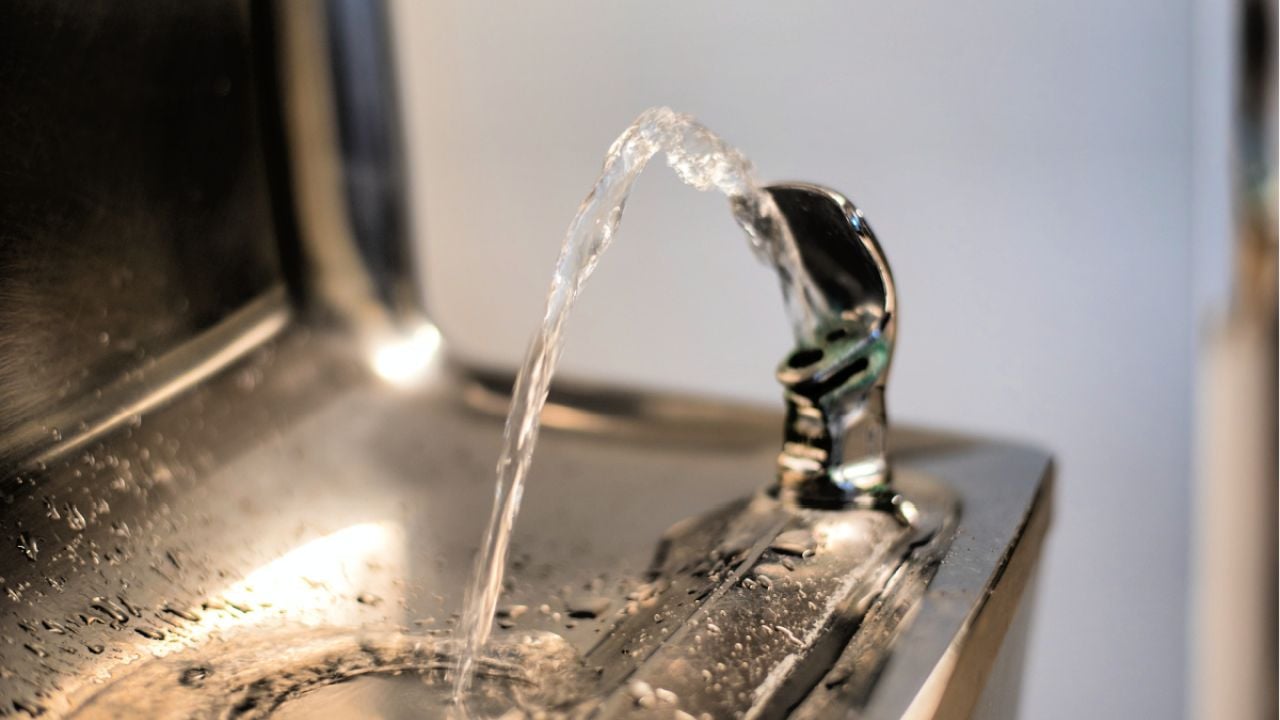
When Harford County Public Schools in Maryland reopen on September 3, a health threat will overshadow the usual excitement of the first day back.
Concerning levels of the toxic “forever chemicals” known as PFAS have been found in the drinking water at 10 schools, following testing by Maryland officials. Last week, reports revealed particularly high levels of PFAS contamination at Fallston High School and Harford Technical High School, with the Maryland Department of the Environment strongly recommending that the water not be consumed.
The findings are alarming because it means students and school employees have been exposed without their knowledge, likely for years.
Water tested at the 10 schools had PFAS contamination levels exceeding 4 parts per trillion, or ppt, the new limits for PFOA or PFOS – two of the most notorious PFAS – that the Environmental Protection Agency finalized in April.
In one sample at Fallston High School, PFOS contamination alone was 25 times the EPA limit.
Table of school water samples and PFAS detections (in parts per trillion)
| School | Water sample | PFHxS | PFNA | PFOA | PFOS | Total PFAS |
| Fallston High School | Sample 1 | 129 | 27.8 | 16.9 | 100 | 273.7 |
| Sample 2 | 19 | 16.2 | 4.52 | 58.5 | 98.22 | |
| Hartford Academy | Sample 1 | 45 | 26 | 77.3 | 31.5 | 179.8 |
| Sample 2 | 25.6 | 33.8 | 17.2 | 76.6 | ||
| Prospect Mill Elementary School | Sample 1 | 11.4 | 36.9 | 7.93 | 56.23 | |
| Sample 2 | 12.3 | 7.19 | 19.49 | |||
| Norrisville Elementary School | Sample 1 | 52.8 | 52.8 | |||
| Hartford Technical High School | Sample 1 | 26.7 | 5.51 | 32.21 | ||
| Sample 2 | 19.9 | 19.9 | ||||
| Dublin Elementary School | Sample 1 | 9.02 | 7.12 | 16.14 | ||
| Sample 2 | 5.33 | 6.56 | 11.89 | |||
| Churchville Elementary School | Sample 1 | 6.48 | 4.93 | 11.41 | ||
| Forest Hill Elementary School | Sample 1 | 7.66 | 7.66 | |||
| Sample 2 | 7.05 | 7.05 | ||||
| Fallston Middle School | Sample 1 | 6.27 | 6.27 | |||
| Jarrettsville Elementary School | Sample 1 | 4.48 | 4.48 |
Understanding new EPA PFAS limits
These detected PFAS levels far exceed the strict new limits set by the EPA for six PFAS – PFOA, PFOS, GenX, PFBS, PFNA and PFHxS. These maximum contaminant levels, or MCLs, are among the toughest health protections against PFAS in the world.
The new MCLs allow just 4 ppt for PFOA and PFOS, and a hazard index to address the combined risks of the four other PFAS. The low limits reflect the agency’s recognition that these chemicals are hazardous even at extremely low levels, reinforcing the urgency of tackling widespread PFAS drinking water contamination.
It’s crucial to note that the EPA has also set a maximum contaminant level goal of zero for PFOA and PFOS due to their serious cancer risks. This goal represents the level at which the EPA believes no adverse health effects, including cancer, would occur.
Similarly, for other toxic PFAS like GenX, PFNA and PFHxS, the goals are set at 10 ppt, reflecting the substantial health risks associated with even low-level exposure.
How PFAS harm health
For decades, 3M and DuPont hid the health harms of PFAS from regulators, workers and neighboring communities.
Very low doses of PFAS have been linked to suppression of the immune system. Studies show exposure to PFAS can also increase the risk of cancer, harm fetal development and reduce vaccine effectiveness.
They are known as forever chemicals because once released into the environment, they do not break down, and they can build up in the body. The Centers for Disease Control and Prevention has detected PFAS in the blood of 99 percent of Americans, including newborn babies.
PFAS pollution affects more than 130 million Americans, with government data confirming the chemicals have tainted the water supply at 7,457 locations across the U.S.
What Harford County schools are doing to protect students
Harford County Public Schools will provide bottled water at the five most affected schools and urge students and staff to bring their own refillable bottles. Water fountains will be replaced with dispensers, and clear signs will remind everyone not to drink from the sinks.
The school district has said that resolving the PFAS problem will be time-consuming and expensive.
PFAS contamination of schools’ drinking water is not limited to Maryland.
In 2020, EWG found suspected industrial sources of PFAS were located within a mile of 27 schools or childcare facilities with their own water systems. This issue affected schools and childcare centers in 18 states, including Michigan, Oregon, Pennsylvania and Wisconsin. The facilities were situated within 5,000 feet of known or suspected PFAS manufacturers.
Advice for parents concerned about PFAS exposure from school water
If you're worried your child might have been exposed to high levels of PFAS from school water, there are steps to take to minimize exposure and protect your family’s health.
Consult your pediatrician about potential health screenings or tests that can identify the impact of PFAS exposure.
In addition, consider a home filtration system that is certified to remove PFAS, as this can help reduce further exposure. EWG researchers tested the performance of 10 popular water filters to evaluate how well each reduced PFAS levels detected in home tap water.
And stay informed and engaged with local health officials and school updates to ensure you’re taking all necessary precautions.



